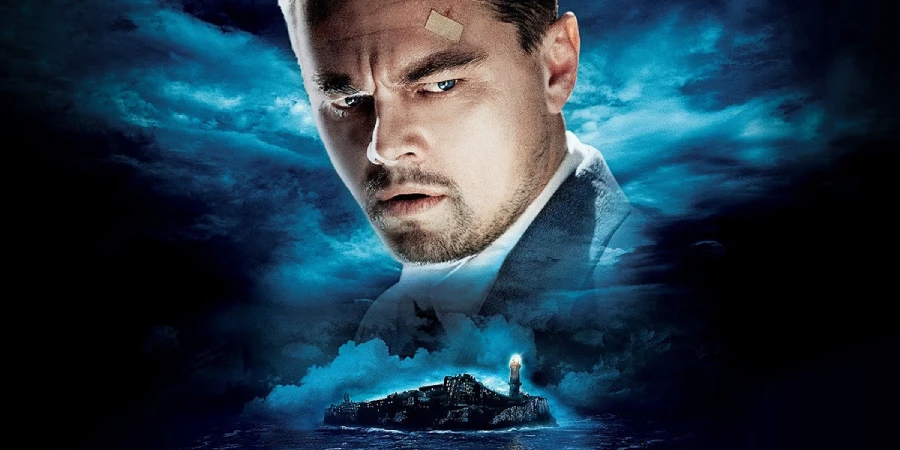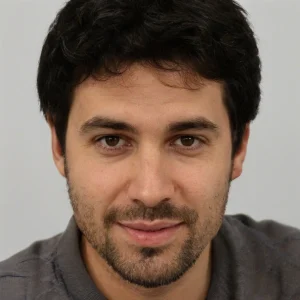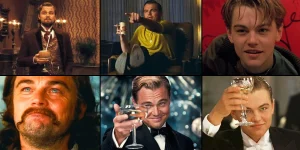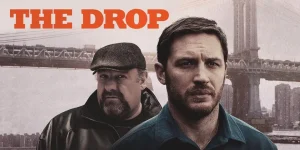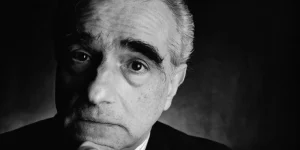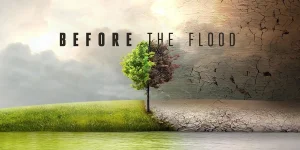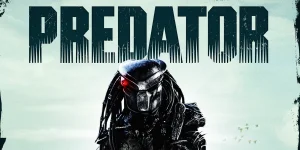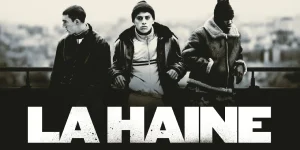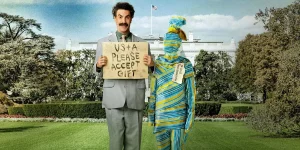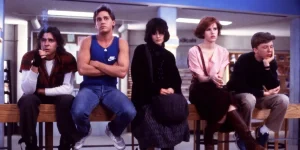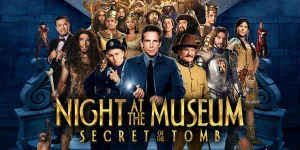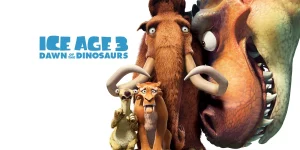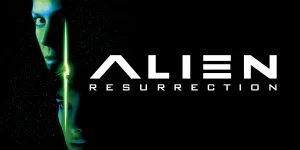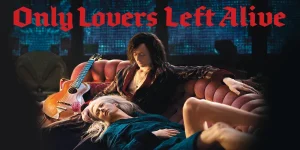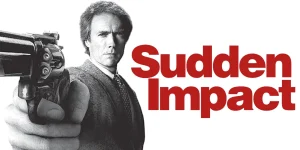Martin Scorsese’s Shutter Island (2010) is a psychological thriller that blends mystery, trauma, and identity into a haunting cinematic experience. With Leonardo DiCaprio in the lead, the film is packed with atmospheric tension, unexpected twists, and a devastating finale that leaves viewers questioning everything they’ve seen. Based on Dennis Lehane’s novel of the same name, Shutter Island has become a cornerstone of psychological cinema.
Table of Contents
ToggleDetailed Summary
Arrival at Shutter Island
In 1954, U.S. Marshal Teddy Daniels (Leonardo DiCaprio) and his new partner Chuck Aule (Mark Ruffalo) arrive at Ashecliffe Hospital for the criminally insane, located on the remote Shutter Island. They’re there to investigate the mysterious disappearance of Rachel Solando, a patient who vanished from a locked room with no trace.
The island is isolated, surrounded by cliffs and ocean, and battered by an impending storm—perfectly setting the tone for a story steeped in paranoia and psychological unraveling.
The Investigation Deepens
Teddy becomes increasingly suspicious of the hospital staff, particularly Dr. Cawley (Ben Kingsley) and Dr. Naehring (Max von Sydow), suspecting that unethical experiments are taking place. He’s haunted by flashbacks of his time as a soldier during the liberation of Dachau and the death of his wife Dolores (Michelle Williams) in a fire set by a man named Andrew Laeddis.
Teddy believes Laeddis is being kept somewhere on the island under a false identity. As the storm grows worse, communication with the mainland is cut off, and Teddy’s grip on reality begins to loosen. He experiences disturbing dreams and hallucinations involving his wife and children.
The Lighthouse and the Truth
Teddy becomes fixated on the island’s lighthouse, believing it to be the site of illegal experiments on patients. After navigating the treacherous terrain and avoiding security, he finally reaches it.
Inside the lighthouse, the truth is revealed.
Movie Ending
Teddy Daniels is not a U.S. Marshal. His real name is Andrew Laeddis, and he’s a patient at Ashecliffe.
Chuck is actually Dr. Lester Sheehan, his primary psychiatrist. The entire investigation was a role-play experiment—an extreme therapeutic attempt to break Andrew out of his delusional state. Andrew had murdered his wife Dolores after she drowned their three children. Unable to accept this trauma, he created an alternate persona: Teddy Daniels, a heroic marshal investigating the man who supposedly killed his wife.
Rachel Solando, the woman he was searching for, is a fabricated name derived from an anagram of his wife’s name. “Teddy Daniels” is also an anagram of “Edward Daniels,” another false identity that he created.
After going through the events of the story and being confronted with the evidence, Andrew appears to accept reality. The doctors are hopeful he has finally broken through.
But in the film’s final scene, Andrew—sitting with Dr. Sheehan—says, “Which would be worse: to live as a monster, or to die as a good man?” This chilling line suggests that Andrew may have regressed into his delusion again—or perhaps he’s pretending to do so to avoid facing the horror of what he’s done. It’s deliberately ambiguous, leaving the audience to wonder whether he’s truly lost or choosing to forget.
Are There Post-Credits Scenes?
No, Shutter Island does not have any post-credits scenes. Once the credits roll, the story is complete, though the emotional and psychological aftermath might linger in your mind for a while.
Type of Movie
Shutter Island is a psychological thriller with strong elements of mystery, neo-noir, drama, and psychological horror. Its tone is dark, introspective, and emotionally intense, built around themes of grief, mental illness, identity, and moral ambiguity.
Cast
- Leonardo DiCaprio as Teddy Daniels / Andrew Laeddis
- Mark Ruffalo as Chuck Aule / Dr. Lester Sheehan
- Ben Kingsley as Dr. John Cawley
- Max von Sydow as Dr. Jeremiah Naehring
- Michelle Williams as Dolores Chanal
- Emily Mortimer as “Rachel Solando”
- Patricia Clarkson as Dr. Rachel Solando (real version)
- Jackie Earle Haley as George Noyce
Film Music and Composer
The movie does not feature an original score. Instead, Robbie Robertson curated the soundtrack, selecting avant-garde classical pieces that add a constant sense of tension and unease. Notable tracks include works by Krzysztof Penderecki, György Ligeti, and John Adams, which complement the film’s eerie and unsettling atmosphere.
Filming Locations
- Medfield State Hospital, Massachusetts: Used for the interiors and exteriors of Ashecliffe Hospital. This real-life abandoned mental institution was perfect for the setting’s grim and decaying vibe.
- Peddocks Island, Boston Harbor: Scenes of the island and fort were shot here. Its natural isolation adds to the film’s claustrophobic tone.
- Taunton and Fall River, MA: Additional scenes were filmed around Massachusetts for authenticity.
These locations weren’t just practical—they reinforced the psychological isolation and inescapability that the story hinges upon.
Awards and Nominations
While the film wasn’t a major award-season contender, it received several nominations:
- Saturn Award – Best Horror/Thriller Film (Nominated)
- Empire Awards – Best Thriller (Nominated)
- Art Directors Guild – Excellence in Production Design (Nominated)
- Multiple critical and audience accolades for DiCaprio’s performance and Scorsese’s direction.
Behind the Scenes Insights
- DiCaprio reportedly struggled emotionally with the role due to its dark themes, especially scenes involving the children.
- Scorsese requested that the cast and crew watch classic noir films like Out of the Past and Vertigo for stylistic inspiration.
- The storm sequences were enhanced with practical rain and wind machines to create genuine discomfort on set.
- The film’s psychiatric aspects were developed with input from mental health professionals to reflect real treatment theories from the 1950s.
- The “flashback” sequences were carefully color-graded to contrast the dream-like warmth with the bleak reality.
Inspirations and References
- Based on Dennis Lehane’s 2003 novel, Shutter Island, which explores similar themes of memory, trauma, and institutional ethics.
- Visually and thematically inspired by:
- Alfred Hitchcock films (Spellbound, Vertigo)
- German expressionism and 1950s noir
- Historical psychiatric practices and post-WWII trauma
- The novel itself was influenced by psychological case studies and the real history of mental health care in America.
Alternate Endings and Deleted Scenes
No alternate endings were officially filmed, but early drafts of the script featured more overt confirmation that Andrew/Laeddis was faking his regression at the end. Ultimately, Scorsese and screenwriter Laeta Kalogridis chose to leave it ambiguous.
Several deleted scenes (including extended dreams and hallucinations) were cut to preserve pacing and mystery.
Book Adaptation and Differences
While largely faithful, there are a few key differences between the book and the movie:
- The book leans more heavily into the mystery aspect, drawing out the twist more slowly.
- In the novel, Teddy’s final thoughts are written, not spoken aloud—removing the ambiguous tone of the final line in the film.
- Some secondary characters are more fleshed out in the book, offering a deeper dive into Ashecliffe’s structure.
Memorable Scenes and Quotes
Key Scenes
- Teddy’s dream of his wife turning to ash in his arms.
- The reveal in the lighthouse.
- The final conversation between Andrew and Dr. Sheehan.
- The surreal cave scene with the “real” Rachel Solando.
- Teddy’s hallucination of the drowned children.
Iconic Quotes
- “Which would be worse: to live as a monster, or to die as a good man?”
- “This place makes me wonder… which would be worse.”
- “She told me she loved me. That’s the last thing I remember.”
Easter Eggs and Hidden Details
- The glass of water scene: When “Rachel” drinks water, there’s a continuity glitch—she picks it up, but the glass disappears for a moment. This subtle trick mirrors the unreliable perception of Teddy’s delusions.
- Music cues change in dream scenes to suggest shifts in consciousness.
- The names “Rachel Solando” and “Edward Daniels” are both anagrams that hint at the truth.
- The staff’s strange reactions and awkward glances throughout the film are more understandable on a second watch once the twist is known.
Trivia
- Martin Scorsese called this his most emotionally disturbing film to direct.
- The film’s release was delayed by nearly a year, from 2009 to early 2010.
- The US Navy ship in the opening was an actual WWII-era vessel.
- Dennis Lehane approved of the adaptation and praised Scorsese’s interpretation of the psychological tension.
Why Watch?
If you enjoy mind-bending psychological thrillers that leave you questioning reality, Shutter Island is essential viewing. It’s visually stunning, emotionally powerful, and narratively complex. The twist doesn’t just shock—it redefines every event leading up to it. DiCaprio’s performance is among his best, and Scorsese’s direction turns the island into a character of its own.
Director’s Other Movies
- Taxi Driver (1976)
- Goodfellas (1990)
- The Departed (2006)
- The Aviator (2004)
- Silence (2016)
- The Irishman (2019)
- Killers of the Flower Moon (2023)

